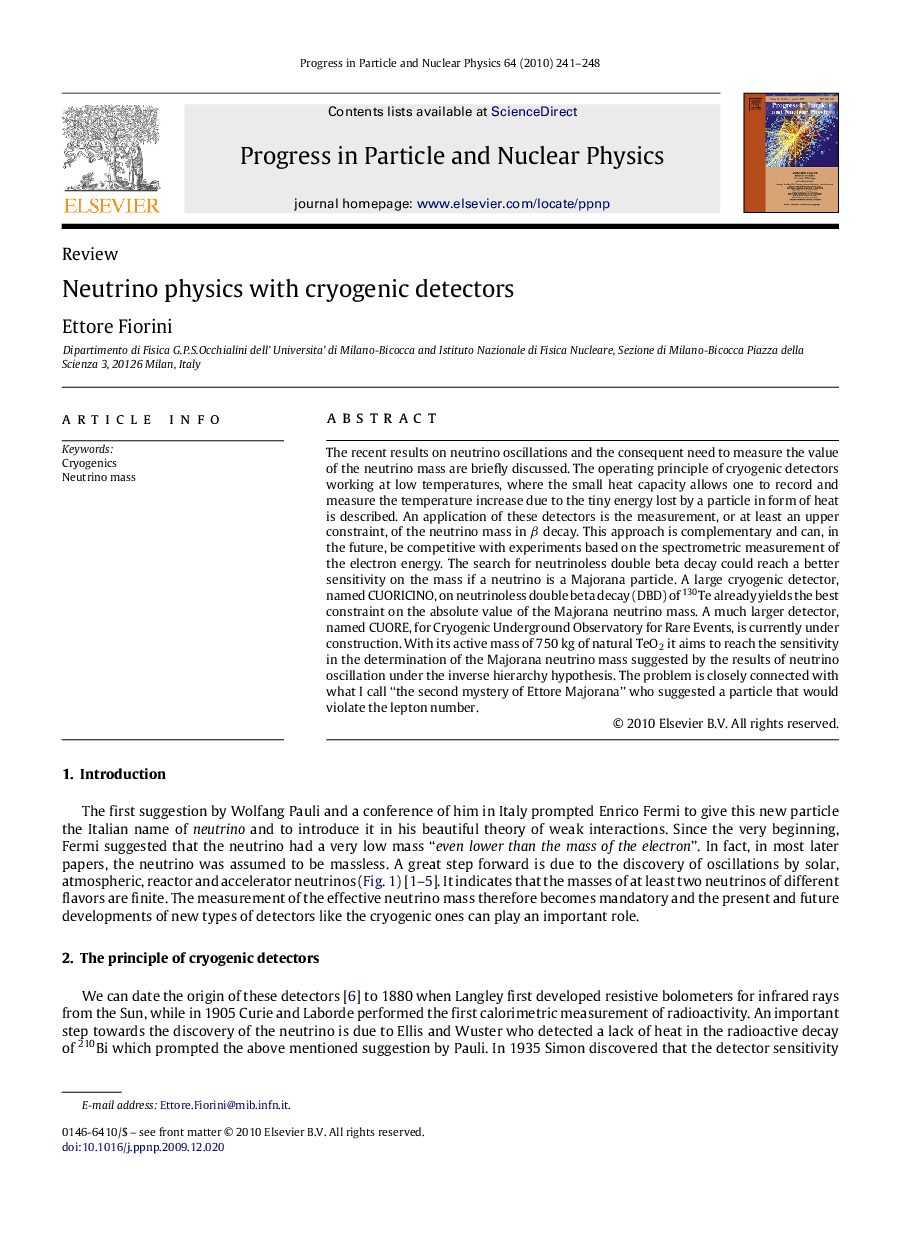| Article ID | Journal | Published Year | Pages | File Type |
|---|---|---|---|---|
| 1853912 | Progress in Particle and Nuclear Physics | 2010 | 8 Pages |
Abstract
The recent results on neutrino oscillations and the consequent need to measure the value of the neutrino mass are briefly discussed. The operating principle of cryogenic detectors working at low temperatures, where the small heat capacity allows one to record and measure the temperature increase due to the tiny energy lost by a particle in form of heat is described. An application of these detectors is the measurement, or at least an upper constraint, of the neutrino mass in β decay. This approach is complementary and can, in the future, be competitive with experiments based on the spectrometric measurement of the electron energy. The search for neutrinoless double beta decay could reach a better sensitivity on the mass if a neutrino is a Majorana particle. A large cryogenic detector, named CUORICINO, on neutrinoless double beta decay (DBD) of 130Te already yields the best constraint on the absolute value of the Majorana neutrino mass. A much larger detector, named CUORE, for Cryogenic Underground Observatory for Rare Events, is currently under construction. With its active mass of 750 kg of natural TeO2 it aims to reach the sensitivity in the determination of the Majorana neutrino mass suggested by the results of neutrino oscillation under the inverse hierarchy hypothesis. The problem is closely connected with what I call “the second mystery of Ettore Majorana” who suggested a particle that would violate the lepton number.
Keywords
Related Topics
Physical Sciences and Engineering
Physics and Astronomy
Nuclear and High Energy Physics
Authors
Ettore Fiorini,
